Ancient Villages
Ancient Villages in Yunnan
Chinese Name: 丽江市玉龙县宝山乡吾木村委会吾木村
English Name: Wumu Village of Baoshan Town in Yulong County, Lijiang
Overview:
Wumu Village is located in Baoshan Town, Yulong Naxi Autonomous County, Lijiang, Yunnan Province. Situated along the Jinsha River about 120 kilometers from Lijiang city, Wumu Village is renowned for being the only Naxi village where descendants of the four ancient clans—Shu, He, You, and Mei—reside together. The village, perched on a mountainside with the Jinsha River at its base, offers a scenic view of the winding mountain roads across the river.
Cultural Heritage:
Wumu Village is recognized as a national traditional ancient village. The village’s unique charm includes its traditional Naxi architecture, steep terraced paths, and the pervasive presence of Dongba script. The Dongba culture, which includes rituals and traditional crafts, is deeply rooted in the village, making it a living example of Naxi cultural heritage.
Scenic Beauty:
The village is characterized by its picturesque setting, with traditional Naxi homes nestled amidst lush greenery. The beauty of the village is especially evident at dusk, when smoke rises from chimneys, and corn drying on rooftops adds a golden touch to the scene. The tranquility of the village at sunset is a stark contrast to the bustling urban life.
Cultural Significance:
Wumu Village is often described as a “hidden paradise,” retaining its pristine charm despite its fame. It has been featured in prominent media outlets like CCTV and Xinhua but remains a serene and untouched gem. The village is a testament to the Naxi people’s enduring cultural traditions and their harmonious relationship with nature.
Activities and Experiences:
Visitors to Wumu Village can engage in various cultural activities, such as learning Dongba script from local masters, experiencing traditional techniques like oil pressing and paper-making, and creating handmade crafts. The village’s rich cultural landscape is highlighted by the Three Gods Temple and the Dongba Cultural Institute, which offer deeper insights into the Naxi culture.
Natural Attractions:
A short walk from the village leads to a cliff overlooking the Jinsha River valley. From this vantage point, visitors can enjoy stunning views of the river’s dynamic flow, the surrounding mountain ranges, and the village itself, which together create a breathtaking natural panorama.
Lifestyle:
Life in Wumu Village is simple and fulfilling, reflecting the wisdom of Dongba culture. The villagers live a rhythmically peaceful life, supporting one another and enjoying the bounties of their land. The harmonious coexistence of nature and culture in Wumu Village offers a perfect retreat from the hustle and bustle of modern life.
Conclusion:
Wumu Village is not just a cultural treasure but also a sanctuary for those seeking peace and connection with nature. Its hidden beauty and deep cultural roots make it a unique destination for travelers looking to explore traditional Naxi culture and enjoy a serene escape in the heart of Yunnan.
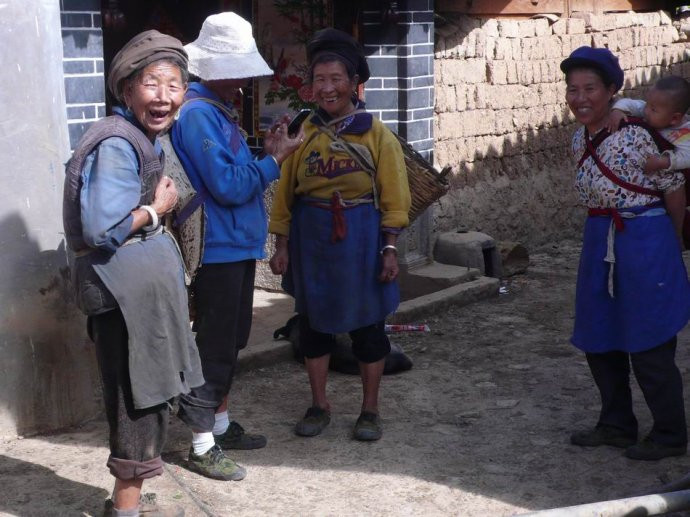
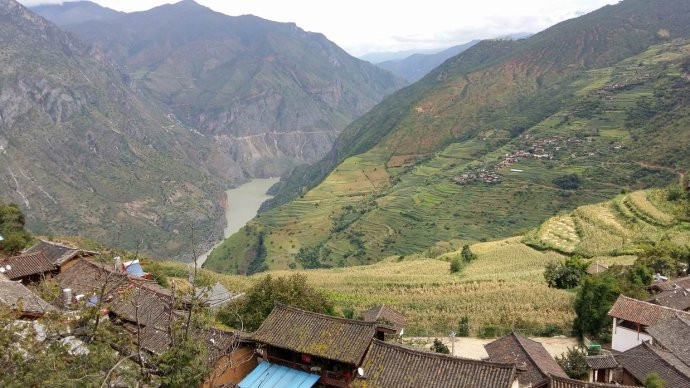
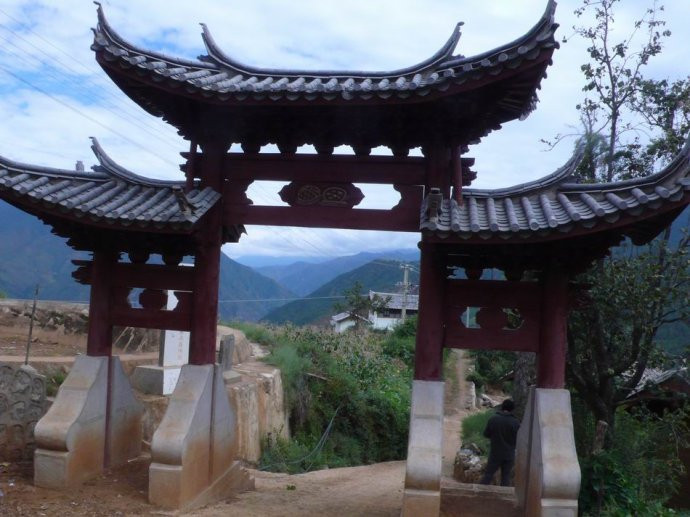
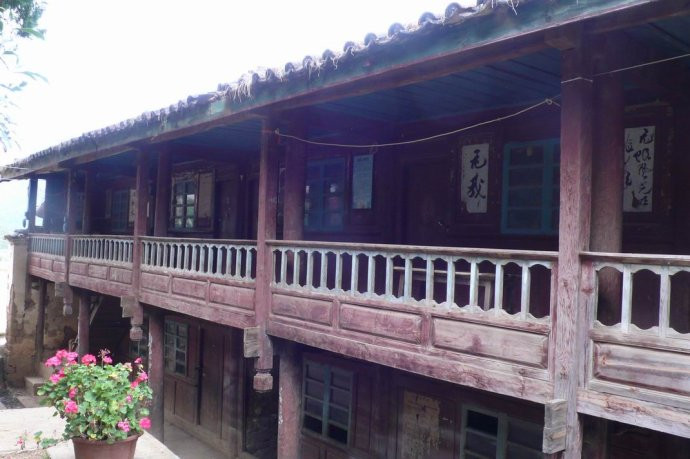
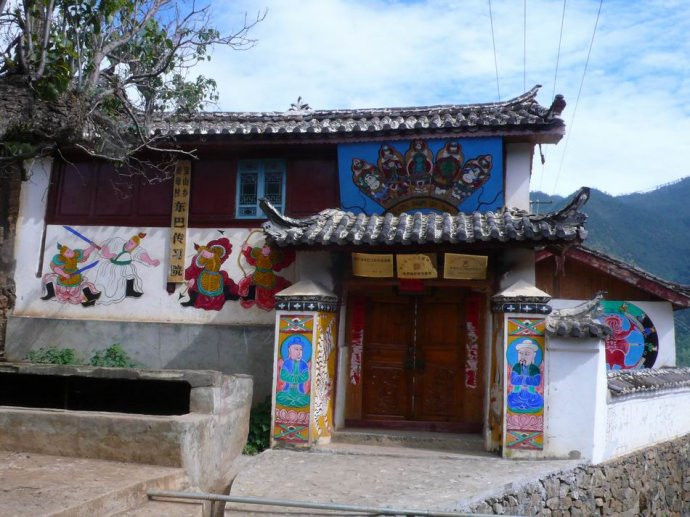
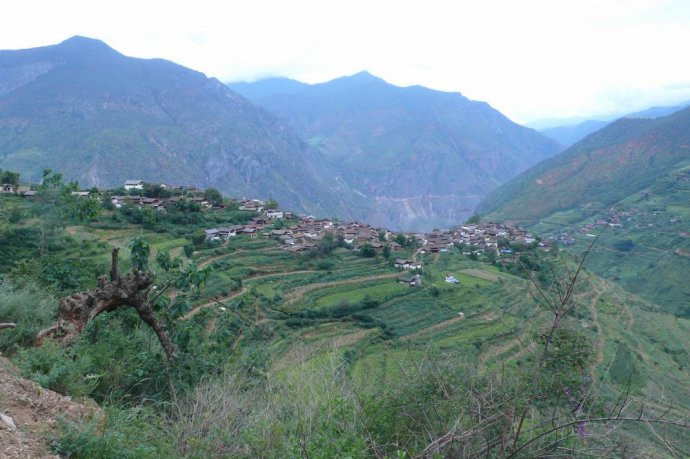
Luchai Bay (芦柴湾) is located on the southern shore of Dianchi Lake (滇池) in Kunming City (昆明市), specifically in Jinning District (晋宁区), approximately 30 kilometers from the city center. This area is an important part of Dianchi Lake, featuring beautiful surroundings and picturesque landscapes.
Luchai Bay is renowned for its clear lake waters, fine sandy beaches, and rich ecosystem. The expansive water surface often reflects the blue sky and white clouds, creating a stunning view where water and sky blend seamlessly. The surrounding mountains and vegetation add to the natural ambiance, attracting many visitors and photography enthusiasts.
Luchai Bay is an ideal destination for relaxation and vacation, offering a variety of activities:
Driving from Kunming City (昆明市) to Luchai Bay (芦柴湾) at South Dianchi Lake (南滇池) takes about one hour. Visitors can also opt for public transportation to reach the area.
In summary, Luchai Bay (芦柴湾) is a fantastic destination that combines natural beauty with diverse activities, suitable for families, friends, or couples looking to enjoy a pleasant time together.
? The beach park on the southern bank of Dianchi Lake (滇池) is hailed as Kunming’s (昆明) “Little Sanya” (小三亚). It is less crowded and beautifully scenic, making it an excellent spot for photography. ?
? Next to the park is Whale Bay (鲸鱼湾), where you can see the popular Whale Island (鲸鱼岛) online, as if you are embraced by the ocean. ?
? How to get there? It is recommended to take Bus Line No. 3 from the Chenggong Yuhua Hub Bus Station (呈贡雨花枢纽公交站), which takes about 1.5 hours to reach. Alternatively, if you prefer not to wait for public transportation, you can opt for a ride-sharing service, which is convenient and quick; a round trip for two people costs approximately 90 yuan (90元). ?
?️ Come to the beach park at the southern bank of Dianchi Lake (滇池), feel the sea breeze, and enjoy the tranquility of nature!
Chinese Name: 大理白族自治州祥云县云南驿镇云南驿村
English Name: Yunnanyi Village of Yunnanyi Town in Xiangyun County, Dali
Yunnan Yi Village is located in the northern part of Yunnan Yi Town, Xiangyun County, Dali Bai Autonomous Prefecture, Yunnan Province. It is about 3 kilometers from the town government and has convenient transportation. The village borders Longdong Village to the east, Shuikou Village to the south, Gaoguan Village to the west, and Beipeng Village to the north. It has 9 administrative groups and a total population of 4,605, with 4,452 people engaged in agriculture. The village has 2,751 acres of arable land, with an average of 0.62 acres per person, and mainly grows crops such as rice, broad beans, and corn. In 2010, the village’s total economic income was 40.38 million yuan, with a per capita net income of 3,706 yuan. The primary sources of income are agriculture and animal husbandry.
Yunnan Yi was an important post station on the ancient “Southern Silk Road” and “Tea Horse Road,” with a long history. As the administrative center of Yun Nan County during the Han Dynasty and one of the largest post stations on the ancient Tea Horse Road, Yunnan Yi once thrived. It was a transportation hub in southern China, witnessing the trade of tea, silk, and porcelain, and recording the glory of ancient mule caravan culture.
With the advancement of modern transportation, Yunnan Yi Ancient Town has gradually integrated into the modernization process. Today, Yunnan Yi is market-oriented, with a diversified industrial development pattern, including agriculture, animal husbandry, and business operations. The area around the ancient town features many specialty restaurants and leisure fruit-picking gardens, such as the Nongyun Ecological Fruit Garden in Xiangyun County, which offers a variety of fruits to meet visitors’ needs.
Visitors can experience traditional mule caravan culture in Yunnan Yi Ancient Town, visit the Mule Caravan Culture Museum, and experience life in ancient mule stables and post stations. The well-preserved stone-paved streets and historical buildings provide a glimpse into the past. Tourists can also engage in intangible cultural heritage projects such as pottery making and silverware exhibitions, experiencing Yunnan’s traditional crafts and culture.
The best time to visit Yunnanyi Village is during the spring (March to May) and autumn (September to November). During these periods, the weather is mild and pleasant, making it ideal for exploring the village and its surroundings. Spring offers blooming flowers and lush greenery, while autumn provides cooler temperatures and beautiful fall foliage. Summer can be quite warm and rainy, while winter may be chilly but still manageable for those who enjoy cooler temperatures and fewer crowds.
Chinese Name: 大理州大理市喜洲镇喜洲村
English Name: Xizhou Village of Xizhou Town in Dali City, Dali
Xizhou Village is located in the center of Xizhou Town, Dali City, with convenient transportation. It is 34 kilometers from the city center. It is bordered by Erhai Lake to the east, Silie Village Committee to the south, Wenge Village Committee to the west, and Yongxing Village Committee to the north. The village has 910 households and a population of 3,474, including 2,329 engaged in agriculture and 1,600 laborers, with 530 involved in primary industries.
Basic Information and Achievements
Xizhou Village, situated in Dali’s historic Xizhou Ancient Town, is an important Bai ethnic settlement with ample sunlight and fertile soil, suitable for various industrial developments. The village consists of 15 villager groups, 1,400 households, and 3,674 people, with a resident population comprising Bai, Han, and Hui ethnic groups.
Over the years, Xizhou Village has focused on becoming a “world-class” destination, leveraging its position as “China’s top Bai ethnic style town.” It has demonstrated vitality through cultural, tourism, architectural, and specialty product developments, laying a solid foundation for tourism-driven economic growth. In 2016, Xizhou Ancient Town was selected as one of the first batch of characteristic towns; in 2017, it was included in the provincial list of top characteristic towns. The village has been awarded titles such as “National Advanced Unit in Creating Civilized Villages and Towns,” “National Civilized Village and Town,” “Provincial Civilized Village,” “Provincial Boutique Village,” “Dali Prefecture Well-Off Village,” “Ecological Civilization Village,” and “Advanced Grassroots Party Organization,” and has been listed as “China’s Village Card” and one of “China’s Top Ten Ancient Villages.”

In Xizhou Village, nestled in the heart of Xizhou Town, the traditional white-tiled, white-walled residences are surrounded by vast rice fields. As autumn approaches, layers of rice waves turn from green to yellow, attracting many tourists for photos.
“This rice field was originally cultivated land for our village’s Group 9 and 10. After the ancient town’s protection and development, it was preserved as a rice field landscape and has become a symbolic spot for our village’s integration of agriculture, culture, and tourism,” explained Du Shunli, a member of the village’s “two committees.” In recent years, Xizhou Village has leveraged its rich cultural heritage, well-preserved Bai architectural style, and strong Bai customs to integrate the Xizhou Countryside Complex project, inherit Bai culture and farming culture, explore multiple agricultural functions and rural values, and cross-integrate agricultural and modern industry elements. The village has transitioned farmers into shareholders, farmhouses into guesthouses, and villages into tourist attractions, creating a diversified “agriculture+” industry that deeply integrates agriculture with tourism and wellness industries. The village hosts 140 tourism and dining service businesses, 47 rural leisure tourism inns, and 5 rural collective cooperatives, achieving diversified development in the agriculture-culture-tourism industry.
Myths and Legends
Xizhou Village is rich in ancient myths and legends, which add a sense of mystery and legend to this beautiful village. Here are some of the myths and legends related to Xizhou Village:
These myths and legends are an important part of the Dali region’s ethnic culture and one of the distinctive cultural symbols of Xizhou Village. They convey people’s reverence and gratitude toward nature, ancestors, and deities in a unique way, adding endless charm to this beautiful village.
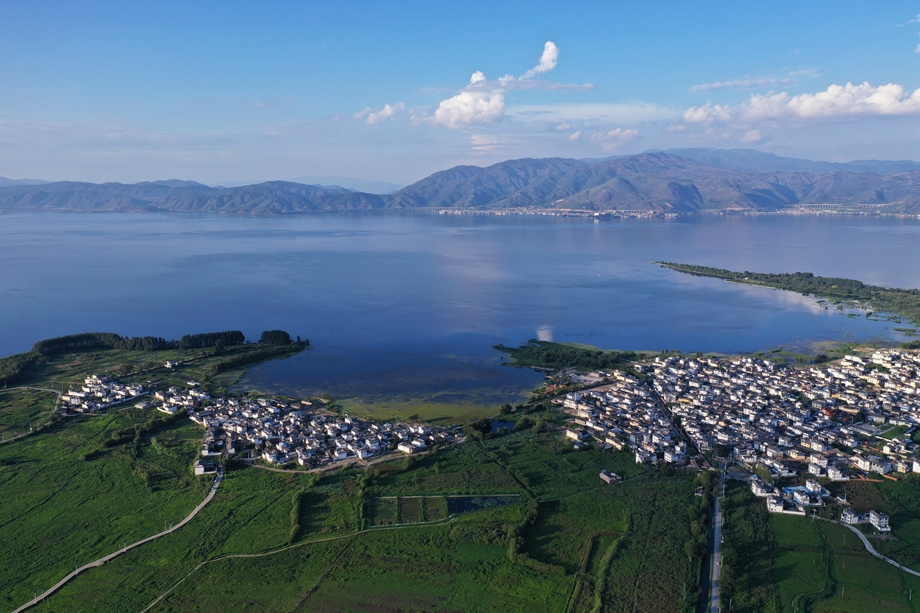
Historical Background
Xizhou Village’s history dates back to the Han Dynasty. In 109 BC, Emperor Wu of Han established Yizhou Prefecture in the Erhai area, which included Yeyu County, roughly located in today’s Xizhou area. In 585 AD, Sui Dynasty general Shi Wansui led a campaign to Erhai and stationed troops in Yeyu, during which Xizhou was known as “Shi City.”
In 779 AD, the Nanzhao King, Yi Mengxun, moved the capital to Shi City and established Dali Jian, also known as Shi Jian or Jian Ruo Prefecture. This became an important administrative region of the Nanzhao Kingdom. Throughout the Song, Yuan, Ming, and Qing Dynasties, Xizhou remained a significant historical and cultural region on the western shore of Erhai Lake.
Xizhou Village is not only rich in history and cultural heritage but has also produced many notable figures and stories.
In addition to these figures and stories, Xizhou Village has produced many other distinguished people and events, such as the achievements of Yin Fucheng and Yang Hongchun. These people and stories together form the rich cultural landscape of Xizhou Village, attracting countless visitors.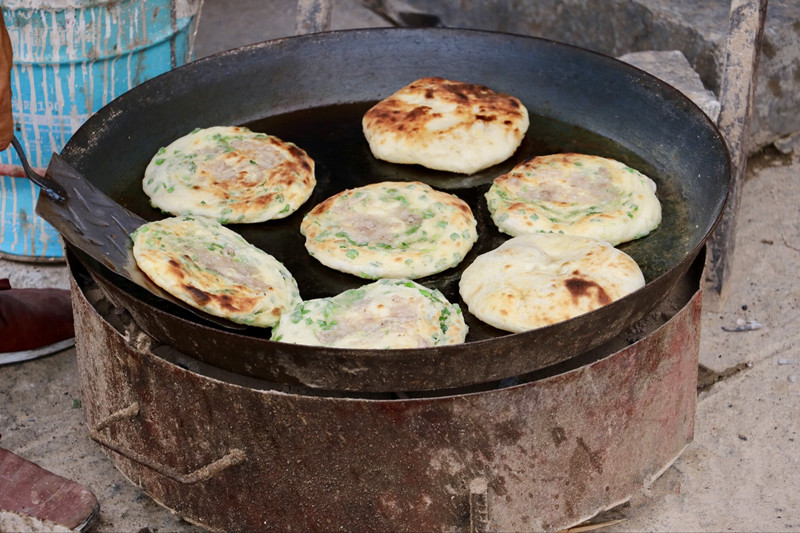
Village Appearance
Xizhou Village, located in the center of Xizhou Town, is an ancient village rich in history and cultural heritage. The village’s appearance is well-preserved, showcasing the perfect blend of Bai traditional architecture and natural scenery.
Surrounded by the beautiful Erhai Lake and Cangshan Mountain, the village presents a unique landscape of mountains, water, and fields. Entering Xizhou Village, one is greeted by a collection of ancient Bai-style buildings, primarily constructed with stone and wood, with stone slab roofs and intricately patterned lime-painted walls, reflecting Bai people’s architectural wisdom and aesthetic taste.
Strolling through the village, visitors can enjoy various styles of gardens, courtyards, and squares, with a strong cultural atmosphere permeating every corner. The village’s streets are crisscrossed, with cobblestone paths extending in all directions, allowing a blend of ancient and modern experiences.
Additionally, Xizhou Village’s fields provide a stunning landscape. In spring, fields are covered in golden rapeseed flowers; in summer, lush green rice paddies extend to the horizon; and in autumn, the ripened rice stalks signal a bountiful harvest. These beautiful field scenes attract many tourists for sightseeing and photography.

Festivals and Activities
Xizhou Village’s festival activities are rich in local characteristics and deep cultural connotations:
These festivals and activities highlight the distinctive cultural customs and lifestyles of the Bai ethnic group and Xizhou Village, attracting numerous visitors every year.
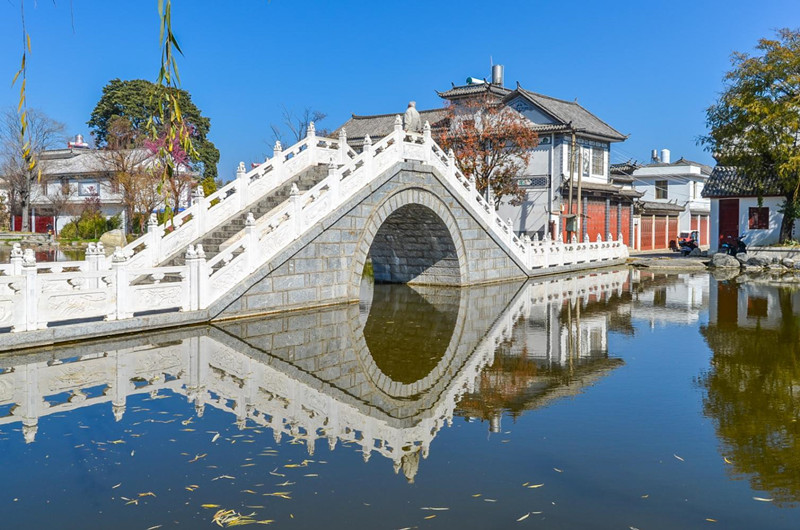
Tourism and Development
In recent years, Xizhou Village has emphasized the development of tourism and infrastructure. With its beautiful natural scenery, rich cultural heritage, and historical significance, the village has become a popular tourist destination in Dali, attracting numerous domestic and international visitors.
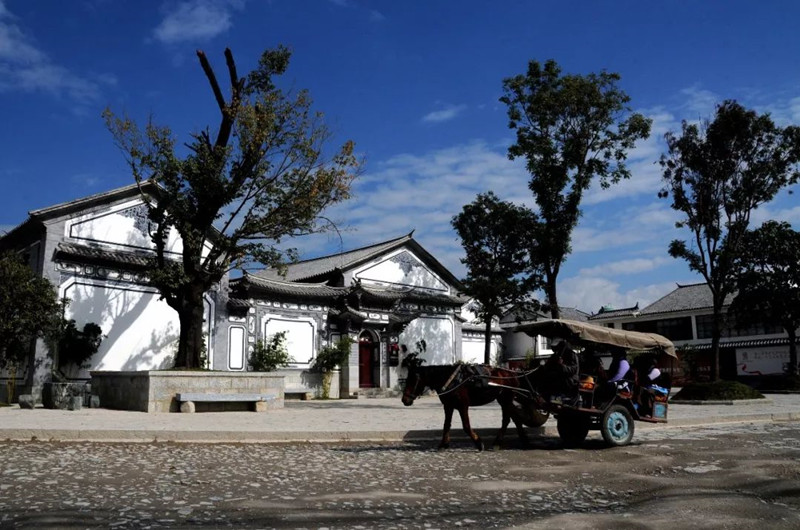
Local Cuisine and Specialties
Xizhou Village’s local cuisine features rich flavors and unique culinary traditions. Here are some notable local dishes and specialties:
These local dishes and specialties reflect the rich culinary heritage of Xizhou Village and offer visitors a taste of the region’s unique flavors.
Chinese Name: 保山市腾冲市中和镇民振村
English Name: Mizhen Village of Zhonghe Town in Tengchong City, Baoshan
Minzhen Village is under the jurisdiction of Zhonghe Town, Tengchong City, Baoshan, Yunnan Province. It is located in the northeastern part of Zhonghe Town, 13 kilometers from the town government headquarters. The road to the town government is now paved with cement, making transportation convenient. The village is 30 kilometers from the city center of Tengchong.
Minzhen Village, part of Zhonghe Town, is situated 13 kilometers northeast of the town government and 30 kilometers from the city center of Tengchong. It borders Zhongying Village to the east, Yanjiakong Community to the south, Gaotian Village to the west, and Houqiao Town to the north. The village comprises four natural villages and eight village groups. There are currently 442 farming households with a rural population of 1,712 people, including 1,651 engaged in agriculture and 945 in the labor force, of which 900 are involved in primary industries.
Minzhen Village covers an area of 32.96 square kilometers, with an elevation of 1,840 meters. The annual average temperature is 17°C, and the annual precipitation is 1,491 millimeters. The village has 1,705 acres of arable land, with an average of 4.29 acres per person; 24,113 acres of forest land, suitable for growing rice, corn, rapeseed, cardamom, tea, walnuts, and camellia oil. Farmers’ incomes mainly come from agriculture and forestry.
Minzhen Village is located 13 kilometers northeast of the town government and 30 kilometers from Tengchong city center. It is bordered by Mazhan Township to the east, Yanjiakong to the south, Fanjiaying to the west, and Houqiao Town and Zhongying to the north. The four natural villages of Gaoqiao, Kuedian, Houtoutian, and Banglangtian are arranged from south to north. The village has a long history, rich resources, beautiful scenery, and diverse culture. The village is surrounded by mountains, with the Kuedian River meandering from the northwest corner of the village, aligning with the traditional Chinese Feng Shui principle of “resting on the mountain and facing the water.” The houses are built along the mountain, distributed in a staggered manner, stretching for several miles, with farmhouses nestled among the greenery. The overall layout is concentrated yet relatively dispersed, with farmers living by the mountains and scattered among the forests.
Entering Minzhen Community in Zhonghe Town, Tengchong City, one encounters this traditional village surrounded by mountains and water, with the fragrance of rice flowers. It echoes the poetic lines: “The moonlight separates the branches and startles the magpies, the clear breeze sounds the cicadas at midnight. The fragrance of rice flowers speaks of a bountiful year, and the sound of frogs fills the air. Beyond the seven or eight stars in the sky, there are two or three raindrops in the mountains. The old straw hut by the forest, with the road turning and the stream bridge appearing suddenly…”
Minzhen Village, located 13 kilometers northeast of the town government and 30 kilometers from Tengchong city center, is bordered by Mazhan Township to the east, Yanjiakong to the south, Fanjiaying to the west, and Houqiao Town and Zhongying to the north. The four natural villages of Gaoqiao, Kuedian, Houtoutian, and Banglangtian are arranged from south to north. The village has a long history, rich resources, beautiful scenery, and diverse culture. It is surrounded by mountains, with the Kuedian River meandering from the northwest corner, in line with the traditional Chinese Feng Shui principle of “resting on the mountain and facing the water.” The houses are built along the mountain, distributed in a staggered manner, stretching for several miles, with farmhouses nestled among the greenery. The overall layout is concentrated yet relatively dispersed, with farmers living by the mountains and scattered among the forests.
The total land area of the village is 32.96 square kilometers, with a population of 1,672 people. The main crops are rice, corn, and rapeseed. Due to the high forest cover and abundant water resources, the village faced water shortages in the past due to inadequate production infrastructure. To address water management and improve livelihoods, Yunnan’s first frontier supervisor, Li Yuegai, organized the construction of the Kuedian River dam in 1935. The project consists of a river dam, a sluice stone tower, and an eastern water diversion canal. The project is grand in scale, well-designed, and equipped, benefiting tens of thousands of people. It continues to serve as a vital water source for drinking and irrigation for the thousand-acre rice fields. The dam facilities remain in their original state and are now one of the most representative hydraulic facilities and important historical relics in Tengchong.
Guanyin Temple
Guanyin Temple: Built in 1930, covering an area of 5 acres, it consists of the Guanyin Hall and the Earth God Hall. The building is wooden with stone and earth walls and a volcanic stone paved floor. The main structure is a traditional wooden framework with three beams, 7 meters high, 16 meters wide, and 7 meters deep, with a gray tile roof in a hip style. The interior is primarily wood, featuring painted designs. It serves as the main center for folk Buddhist culture in the village and a place for community elderly activities.
Li Family Ancestral Hall
Li Family Ancestral Hall: Built in the 17th year of the Shunzhi period of the Qing Dynasty, the building was donated by villager Li Tingmei after his appointment to the provincial capital. It was rebuilt in 1810, covering 1.5 acres with a two-story traditional wooden structure, stone and earth walls, 7 meters high, 13 meters wide, and 6.5 meters deep. The roof is a gray hip style, with decorative painted designs, drum-shaped columns, and a floor paved with volcanic stones.
Wang Family Ancestral Hall
Wang Family Ancestral Hall: Built in 1810, covering 1.5 acres.
Ancient Paths
Ancient paths formed during the Ming and Qing Dynasties are the first rest stop for caravan traders entering from Myanmar on the ancient Silk Road. The name “Kuedian” originates from this first stop. The path ascends along a gentle slope, winding and paved with local volcanic stones, and remains well-preserved.
Pingtian Ancient Bridge
Pingtian Ancient Bridge: Built during the Qing Dynasty-Han War, spanning 5 meters, 6 meters high, and 1.2 meters wide. The bridge piers are constructed from volcanic stones, while the bridge surface is made from handmade stone slabs transported from outside the village.
Zhongqiao Ancient Bridge
Zhongqiao Ancient Bridge: Built during the Qing Dynasty-Han War, spanning 4 meters, 5 meters high, and 1.5 meters wide. The bridge piers are constructed from volcanic stones, while the bridge surface is made from handmade stone slabs transported from outside the village.
White Tiger Mountain Ancient Bridge
White Tiger Mountain Ancient Bridge: Built during the Qing Dynasty-Han War, spanning 4 meters, 7 meters high, and 1.2 meters wide. The bridge piers are constructed from volcanic stones, while the bridge surface is made from handmade stone slabs transported from outside the village.
Xiaodiao Tower (Wenbi Tower)
Xiaodiao Tower: Built in the 55th year of the Qianlong period (1790) by the governor Hu Qirong, who was appointed to Tengchong for land cultivation.
Beidong Archway (Kuedian River Dam Project)
Kuedian River Dam Project: Located 2 kilometers northwest of the village at the Kuedian River dam site. Organized by Yunnan’s first frontier supervisor, Li Yuegai, in 1935. The project consists of a river dam, a sluice stone tower, and an eastern water diversion canal. The central canal segment includes a tunnel (1108 meters long) named Beidong Ditch, built in two phases: the first stage started in 1932, with seven years of construction resulting in the completion of the intake dam, an octagonal hollow stone tower, and a water diversion gate. The second stage, begun in 1970 and completed in 1974, involved opening the tunnel and constructing a 12-kilometer earthen canal. The Beidong Ditch was completed in May 1976, with an archway built at the tunnel exit.
Chinese Name: 大理白族自治州云龙县诺邓镇诺邓古村
English Name: Nuodeng Ancient Village of Nuodeng Town in Yunlong County, Dali
Nuodeng Village is located at the southern end of the Three Parallel Rivers of Yunnan Protected Areas World Heritage Site, in Yunlong County, Yunnan Province, China. It is 165 kilometers from the seat of Dali Prefecture and is easily accessible. It was one of the earliest economic centers of the Bai ethnic group, the oldest village in northwest Yunnan, and is recorded in the earliest historical texts of Yunnan, such as “Manshu,” where its original name has remained unchanged. The village preserves numerous buildings from the Ming and Qing dynasties, as well as the famous Yuhuangge Taoist architectural complex.
Basic Overview
Historical research indicates that Nuodeng is the oldest village in northwest Yunnan and retains its original name as recorded in “Manshu,” the earliest historical text in Yunnan. The village has few modern residential buildings but maintains many Ming and Qing dynasty structures, including the renowned Yuhuangge Taoist architectural complex.
The name “Nuodeng” in the Bai language means “hill with tigers.” This small village, which has endured through the Tang, Song, Yuan, Ming, and Qing dynasties over a period of 1138 years, was historically significant. “Manshu,” written during the Tang Dynasty, provides clear records of Nuodeng, indicating that it had already developed salt wells by the Tang Dynasty and relied on salt production for its livelihood.
Nuodeng, also known as “Nuodeng Well,” where “Well” refers to salt wells, played a crucial role in the salt industry. According to historical records, salt mining in Yunnan began during the Qin and Han Dynasties. From the Tang Dynasty onwards, Nuodeng Village’s development was entirely dependent on the rise and fall of the salt industry.
Due to the exceptional quality of Nuodeng salt, it has long been favored in the Baoshan and Tengchong regions. The ancient “Tea Horse Road” in Nuodeng connected to Dali, Kunming, Baoshan, Tengchong, Liuku, and Lijiang, attracting merchants from all directions and thriving economically. Nuodeng Village was once one of the commercial centers of northwest Yunnan.
The well-preserved ancient salt wells and the site of the Ming Dynasty Five Wells Salt Inspection Office are valuable resources for studying the ancient salt industry and culture of Yunnan.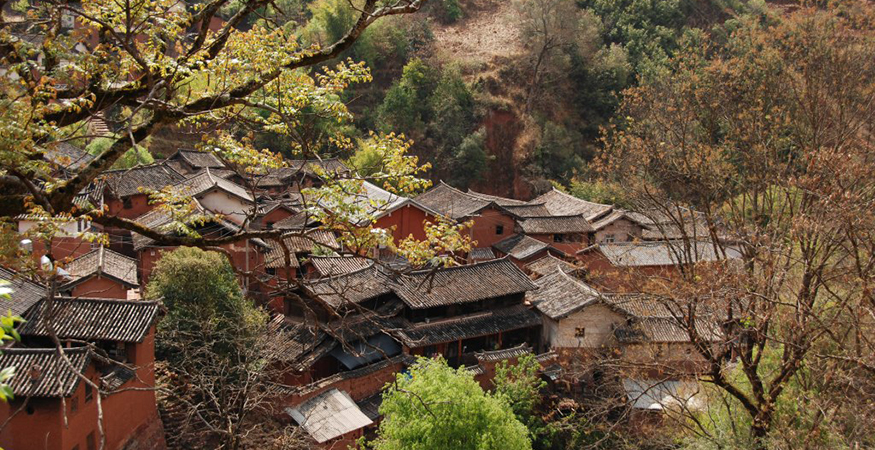
Geographical Advantages
In addition to salt, Nuodeng has also “produced” scholars and talents. Despite its remote location and inconvenient transportation, the village was renowned for its cultural achievements and the number of scholars during the Ming and Qing Dynasties.
Nuodeng Village boasts the highest number of “jingshi” (successful imperial examination candidates) in Yunlong, with numerous “juren” (provincial degree holders), “gongsheng” (graduate students), and “xiucai” (talented individuals). During the Kangxi and Qianlong periods of the Qing Dynasty, local scholar Huang Gui became a prominent cultural figure, known as “The Confucian Luminary of Central Yunnan.”
Surrounded by mountains, Nuodeng Village has an elevation ranging from 1900 meters at the lowest point to over 2100 meters at the Yuhuangge. The terrain varies greatly, with most residential buildings situated on hillsides, except for a small flat area behind the “Dragon King Temple” on the eastern foothills. The architectural style of the village’s residences is similar to Bai-style houses in Dali, featuring layouts such as “Three Houses and One Screen Wall” and “Four Courtyards and Five Skylights.” Due to the mountainous terrain, the architecture varies creatively, harmonizing with the natural surroundings.
Nuodeng’s residential buildings emphasize exquisite craftsmanship, with detailed carvings on doors, windows, wooden beams, columns, and eaves. The gable walls and courtyard walls also feature paintings or patterns. Each family’s main house, side rooms, and screen walls have unique designs, making each house distinct. The screen walls, which are significant in Bai architecture, are tall and adapt to the natural features of the land.
The village’s “main gates” are particularly diverse in style and orientation, blending grandeur with elegance. The style of the main rooms reflects a solemn and ancient simplicity, with many households preserving furniture, antiques, and artifacts from the Ming and Qing Dynasties. The existing residential buildings are mainly from the Ming and Qing periods, with a few from the Republican era.
At the mountain top Yuhuangge, one can truly feel the ancient aura of the millennia-old temple. The atmosphere around the area even gives the impression of ancient spirits lingering in the air. Nuodeng is a tranquil village, seemingly distant from the modern world, yet it is a vivid and living ancient village. The villagers are simple and friendly, reminiscent of the early days of the world. When visiting, you are often invited to join them for meals, tea, and even to stay with them.
Local people prepare their staple food with coarse rice mixed with steamed white corn flour, and the meat bone soup is so aromatic it feels like it could make your tongue melt. In leisure time, villagers invite you for tea, and as night falls, they offer to warm you by the fire and even provide a place to rest.
According to villagers, there has never been a major crime in Nuodeng Village throughout history. In Nuodeng, one can truly experience the simplicity and respect for traditions of its people.
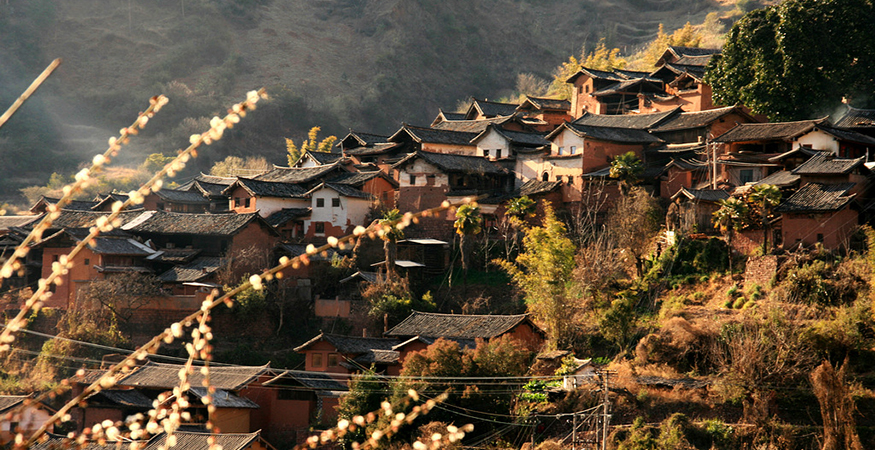
Recommended Attractions
Yuhuang Pavilion Daoist Complex: The complex includes the Yuhuang Pavilion main hall, Maitreya Hall, Guan Yu Temple, Confucian Temple, and Lingxing Gate, all of which are Qing Dynasty temple buildings.
Huang Clan Memorial Archway: This stone archway in the village originally served as the site of the Ming Dynasty Wu Jing Supervisory Office. Later, it became a memorial archway for the Huang family, inscribed with the names of successful scholars and officials from the Huang family from the mid-Ming to the Qianlong period of the Qing Dynasty.
Wanshou Palace: Originally a guesthouse for merchants from outside provinces during the Yuan Dynasty, it was later converted into a temple known as “Zhushou Temple.” In the early Qing Dynasty, it was renamed “Wanshou Palace.” Some wooden framework of the ancient building still remains, and the front hall is mostly intact.
Nuodeng Village Residential Architecture: Includes the Beishan Huang Family residence and other main residential buildings in Beishan. Built to suit the mountainous terrain, the village features old streets, shops, and a labyrinth of alleys with unique styles.
Hedong Residential Architecture Complex: Features ingenious courtyard designs with four-sided and five-courtyard styles, each with distinctive characteristics.
Hetou Residential Architecture: Includes ancient and unique courtyards like the “Silver Smith’s House,” built over 300 years ago.
Salt Wells: The earliest wells were dug during the Han Dynasty, dating back over two thousand years. The name “Nuodeng Wells” has been in use for over 1,300 years. Today, besides the salt wells, there are still buildings like the well house and large salt boiling stoves.
Ancient Post Roads and Bridges: Ancient post roads and bridges connected Nuodeng to Lijiang in the north, Dali in the east, Baoshan in the south, and Piematengchong in the west. Many are paved with stone slabs, and remnants can still be seen today.
Self-Driving: It is 518 kilometers from Kunming and 158 kilometers from the provincial capital Dali. The journey from Kunming to Dali is entirely on the highway. After exiting the highway, it takes about 3 more hours on a tertiary asphalt road to reach Yunlong County. Nuodeng is about 170 kilometers from Dali. Nuodeng is 7 kilometers from the county seat, and the rural roads are gravel mixed with stones, which most sedans can navigate.
Historical Significance
Located in a valley in northwest Yunlong County, Dali Bai Autonomous Prefecture, Yunnan Province, Nuodeng Village has retained its name since the Tang Dynasty’s Nanzhao period, earning it the moniker “Thousand-Year Bai Village.” It is the oldest settlement in northwest Yunnan and is recorded in Yunnan’s oldest historical text, the “Manshu,” preserving its original name.
Architectural Heritage
Nuodeng Village features minimal modern residential buildings, showcasing numerous well-preserved Ming and Qing Dynasty structures. Among these is the famous Yuhuang Pavilion Daoist Complex. The oldest building, the “Wanshou Palace,” dates back to the Yuan Dynasty and has evolved from a guesthouse for merchants to a temple, reflecting the village’s economic prosperity through the Song and Yuan Dynasties.
Cultural Legacy
Despite its remote location and challenging transportation, Nuodeng flourished culturally during the Ming and Qing Dynasties. It produced a significant number of successful imperial examination candidates, including renowned scholar Huang Gui, whose poetry was included in Yunnan’s earliest anthology, “Dian Nan Shi Lue.”
The village is deeply influenced by Confucianism, evident in the elaborate architecture of its Confucian Temple and grand traditional rites. Over time, immigrants from various regions have merged with the local population, resulting in a unique Bai community that continues to uphold traditional customs and religious practices.
Religious and Cultural Diversity
Nuodeng’s religious landscape is characterized by a blend of Daoism, Buddhism, and Confucianism. The village features well-preserved temples from the Kangxi and Qianlong periods, including the Yuhuang Pavilion and various other Daoist and Buddhist temples. Traditional rites, ancestor worship, and deity festivals reflect a rich cultural tapestry of Daoist and Confucian influences.
Preservation and Recognition
Nuodeng Village’s remarkable preservation of ancient architecture and cultural heritage is rare both in Yunnan and nationally. The village offers a profound record of the region’s historical, cultural, economic, and social evolution over centuries. It has been awarded several honors for its historical and cultural significance, including:
Domestic experts and scholars have summarized Nuodeng Village’s historical and cultural value as follows:
Nuodeng Village was awarded the title of “Provincial Historic and Cultural Village” in January 2002. In August 2005, it was designated as a “Tourism Town for Development and Construction in Yunnan Province,” and in September of the same year, it was rated as “China’s Most Tourism-Worthy Ancient Village.” On May 31, 2007, Nuodeng Village was named a “Chinese Historical and Cultural Village,” and in November of the same year, it was also rated as a “Chinese Scenic Village.”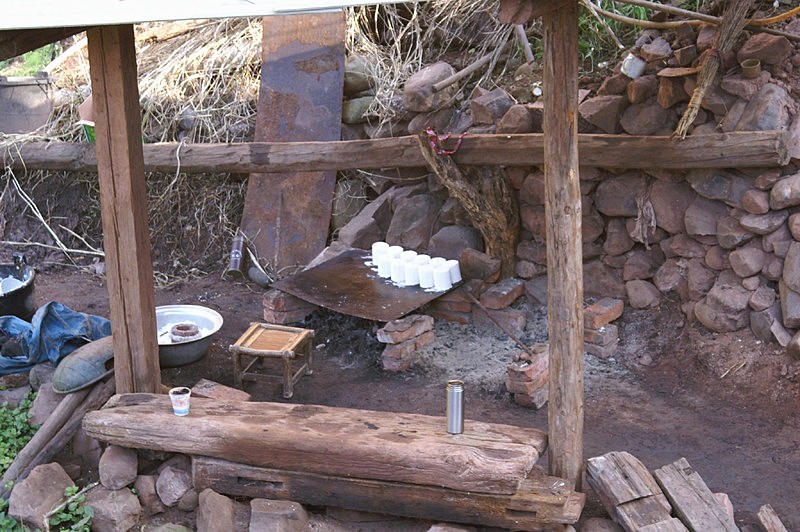
Nuodeng Village offers a glimpse into the rich history, traditional architecture, and cultural heritage of Yunnan. Its ancient salt wells, historic buildings, and unique local customs make it a fascinating destination for visitors interested in China’s historical and cultural landscape.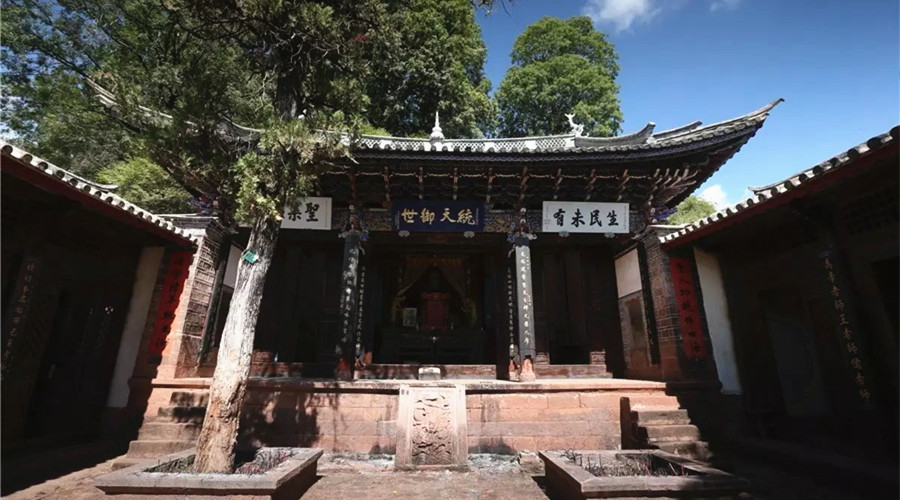
Chinese Name: 大理白族自治州剑川县沙溪镇寺登村
English Name: Sideng Village of Shaxi Town in Jianchuan County, Dali
Sideng Village, named after Sideng Street within its boundaries, is an administrative village under Shaxi Town, Jianchuan County, Dali Bai Autonomous Prefecture, Yunnan Province, China. It is a traditional village located in the center of the Shaxi Basin, beside the Heihui River, with an area of 3.65 square kilometers.
Sideng Village is a Bai ethnic settlement and the only surviving ancient market on the Southern Silk Road’s “Tea Horse Road.” It not only retains the traditional mountain market appearance but also continues the cultural heritage of Buddhism, Confucianism, and Bai folk culture. The village boasts numerous historical relics, including Ming and Qing architecture, residential courtyards, ancient opera stages, Xingjiao Temple, village gates, ancient alleys, Yujin Bridge, and ancient trees. Sideng Street has been listed as a World Endangered Heritage Site by the World Monuments Fund.
On December 17, 2012, Sideng Village was announced by the Ministry of Housing and Urban-Rural Development, the Ministry of Culture, and the Ministry of Finance as one of the first batch of China’s traditional villages.
In October 2021, it was proposed by the Department of Rural Industry Development of the Ministry of Agriculture and Rural Affairs to be included in the 2010-2017 China Beautiful Leisure Villages Monitoring Qualified Publicity List.
During the Spring and Autumn to Western Han periods, Sideng was a production base for bronze weapons, and trading using shells as currency already existed. [5]
In the Qin and Han periods, Sideng Ancient Market was an important market on the “Shu-South Road.”
Since the Tang Dynasty, Sideng Ancient Market became a key junction on the “Tea Horse Road” connecting the Sichuan, Yunnan, and Tibetan border areas.
By the late Yuan Dynasty, trade brought economic prosperity, and with ongoing cultural migration and religious integration, the villages in the Sideng area gradually developed.
In the 13th year of the Ming Yongle era (1415), the Xingjiao Temple of the “Three Teachings” was completed. Due to the open space and numerous Buddhist followers in Shaxi, the market gradually shifted to the open area in front of Xingjiao Temple, forming the prototype of Sideng Street.
After the 1950s, as new roads bypassed Sideng Street, the village was once forgotten by the world.
In October 2001, Sideng Street was included in the “101 Endangered Heritage Sites Worth Noting” by the World Monuments Fund (WMF).
Starting in August 2002, with support from the Ministry of Culture, local governments at various levels in Yunnan Province, the Swiss Federal Department of Development Cooperation, and the Swiss-Chinese Cultural Heritage Conservation Association, the Chinese-Swiss joint project for the first phase of the Shaxi Sideng Street Revival Project was implemented. This project included the restoration of Duan’s Opera Stage, the eastern and southern gates of Sideng Street, the opera stage and flanking houses of Sideng Street, and the ancient buildings of Xingjiao Temple, thus rescuing the endangered Tea Horse Road architectural heritage.
Location and Area
Sideng Village is located in the central part of Shaxi Town, Jianchuan County, Dali Bai Autonomous Prefecture, Yunnan Province. It lies in the center of the Shaxi Basin, beside the Heihui River, covering an area of 2.5 square kilometers.
Topography
Sideng Village has a terrain that is higher in the north and lower in the south, with an average elevation of 2100 meters.
Hydrology
The Heihui River, a tributary of the Lancang River, flows from north to south through Sideng Village.
Vegetation
The village has a high vegetation coverage rate of over 80%, mainly consisting of pine trees, willow trees, locust trees, and a few ornamental trees.
Village Layout
Site Selection Concept
Sideng Village is backed by Shibaoshan Mountain, faces the Heihui River to the east, and is adjacent to Aofeng Mountain to the west, forming a typical “embracing the sun with a mountain and water” layout. This natural condition creates a relatively enclosed space with a harmonious relationship between humans and nature. The natural landscape and architecture, along with greenery, achieve a good background, contrast, layering, and contour effects, which contribute to a favorable ecological environment and microclimate.
Spatial Layout
Sideng Street runs from east to west through the entire Shaxi Ancient Town, which has three gates: the Eastern Gate, Southern Gate, and the Western Gate next to Aofeng Mountain. The Eastern Gate leads to the Dali area, the Southern Gate connects the southern and western parts of the ancient town to the salt wells of Yunnan, and the Northern Gate leads to Tibet.
The Sideng Four-Square Street is the core of Shaxi Ancient Town. The eastern side of the Four-Square Street features an ancient opera stage facing east, while the western side has Xingjiao Temple facing west. The two are in visual harmony, surrounded by shops and inns. Three ancient alleys extend in all directions from the street. Yujin Bridge is located in the southeast, and the Ouyang Courtyard is in the northwest.
Population
Sideng Village is a Bai ethnic settlement.
According to the official website of the Digital Museum of Traditional Chinese Villages in February 2020, Sideng Village has a registered population of 2664 and a resident population of 2567.
Economy
The main industries in Sideng Village are agriculture, animal husbandry, and tourism.
In 2011, Sideng Village received 60,000 tourists, including 12,000 international visitors, with a total tourism revenue of over 8 million yuan. The per capita net income of villagers was nearly 4000 yuan.
As of April 2018, there were 84 restaurants, 107 specialty guesthouses, and 32 traditional craft stores, such as woodcarving and embroidery, directly employing 669 people in tourism.
According to the official website of the Digital Museum of Traditional Chinese Villages in February 2020, the village collective’s annual income was 23.85 million yuan, and the per capita annual income of villagers was 9637 yuan.
Xingjiao Temple
Xingjiao Temple is the only surviving Ming Dynasty Bai Buddhist temple known as “Azhali” in China. In May 2006, it was designated as a national key cultural relic protection unit by the State Council.
The main hall of Xingjiao Temple, known as the Hall of Great Hero, features a double-eaved hipped roof with nine ridges, oriented south to north. The hall is 18 meters wide and 14.5 meters deep, with three bays and surrounding corridors. It has 20 external columns, with each column head connected to the railing, and a decorative beam layout. The hall is a beamless structure, showcasing a solid, elegant, and classic design. Inside, there are wooden Buddha niches and numerous Buddha statues, often referred to as the “Ten Thousand Buddha Hall.”
The second hall of Xingjiao Temple, the Hall of Heavenly Kings, features a hanging mountain roof with five ridges, 19 meters wide in both the south and north directions, and five bays. The depth from east to west is 16 meters, also with five bays. Both the central and secondary bays have six columns in a row, with inner and outer columns arranged with golden pillars.
On both sides of the hall, there are rows of mountain columns with 11 columns each. The columns are interlinked with five connecting beams and encircling straps, with a total of 46 columns and 13 beams in each bay.
Ouyang Courtyard
Located on the northwest side of Siding Street in Siding Village, Ouyang Courtyard was built in the late Qing Dynasty and early Republic of China period. It is a traditional Bai courtyard with the layout of “Three Houses and One Screen Wall, Four Courtyards and Five Skylights.” The courtyard includes a main gate, secondary gate, main building, side rooms, a small garden, a small stage, a kitchen, and an auxiliary horse stable.
The main gate of Ouyang Courtyard is made of stone with a rounded arch top. The gate features a lion relief sculpture, and the top of the gate is decorated with carved birds and various calligraphy and paintings, each unique in style and meaning.
Kweichow Stage
Located opposite Xingjiao Temple, Kweichow Stage was originally built during the Jiaqing period of the Qing Dynasty. It was destroyed by fire and rebuilt in the fourth year of Guangxu (1878). The stage is a three-story structure with a Kweichow Stage base and a unique design featuring flying eaves with 14 corners. A horizontal plaque reading “Universal Illumination of Literary Light” hangs below the eaves.
South Gate
The South Gate of Siding Street is a typical two-story watchtower gate with four sides for beacon fires. The upper level was used by guards for accommodation and defense (with gun ports), while the lower level served as the passageway for pedestrians.
Yujin Bridge
Located about 200 meters east of Siding Street, Yujin Bridge is a single-arch stone bridge. It spans 12 meters, is 6 meters high, 35.4 meters long, and 5 meters wide, with stone pillar and slab railings. The arch is adorned with a stone carving of an “ao” (a mythical creature), and the railing ends feature four stone carvings of “salamanders.”
Ancient Paths
Siding Town is rich in ancient paths, some still in use. The most notable are the stone-paved roads in Mingjian Shou Valley to the north of Shaxi and the ancient paths leading from Shaxi to Misha Salt Wells.
Ancient Trees and Notable Plants
The ancient trees along Siding Street are not only old but also diverse and aesthetically pleasing. Notable examples include a 300-year-old round cypress with a diameter of 54.75 cm, a 500-year-old yellow olive tree with a height of 17 meters and a diameter of 140.06 cm, a 10.4-meter-high, 100-year-old privet tree with a diameter of 54.11 cm, a 300-year-old mountain magnolia with a diameter of 55.7 cm, as well as ancient locust trees and crape myrtles over 100 years old.
Two Ming Dynasty locust trees in front of Xingjiao Temple are similar in size and stand side by side. One of the traditional plays performed on the ancient stage is called “The Tale of the Twin Locust Trees.”
Local Products Buzha is a traditional Bai ethnic craft from Jianchuan. It features a meticulous production process, using brightly colored fabrics that are first sewn into a prototype, then filled with aromatic herbs like mugwort, and finally intricately embroidered. Buzha has a rustic shape, vibrant colors, and strong decorative effects.
Cuisine Shideng Village’s main local delicacies include Bai-style “Eight Bowls,” sheep milk cakes, porcini mushrooms, white kidney beans, wild ginseng, and chicken bean jelly.
| Date | Honorary Title | Awarding Organization |
|---|---|---|
| November 2008 | Yunnan Province Tourist Feature Village | Yunnan Provincial Tourism Bureau |
| 2010 | China’s Village Business Card | China Village and Community Development Promotion Association |
| December 2012 | China’s Traditional Village | Ministry of Housing and Urban-Rural Development, Ministry of Culture, Ministry of Finance |
| December 2014 | Top Ten Cultural Villages in Yunnan | Yunnan Provincial Cultural Industry Development Leading Group Office |
| September 2017 | China’s Beautiful Leisure Village Historical Ancient Village | Ministry of Agriculture |
| November 12, 2021 | China Beautiful Leisure Village Monitoring Qualified 2010-2017 | General Office of Ministry of Agriculture and Rural Affairs |
| November 2021 | Selected for Yunnan Province 2021 Beautiful Village Suggested List (Provincial-Level Beautiful Village) | Yunnan Provincial Government |
Getting to the Village Shideng Village is 32 kilometers from Jianchuan County, with Pingdian Road and National Highway 214 as the main routes, offering convenient transportation. You can take a bus from Dali North Station to Jianchuan County, which is 126 kilometers and takes 2-3 hours. From Jianchuan Passenger Station, take a minibus or small van to Shaxi Shideng Street.
Chinese Name: 普洱市江城县整董镇曼滩村委员会曼贺井寨
English Name: Manhejing Village of Zhengdong Town in Jiangcheng County, Pu’er
Location:
Climate:
Population and Economy:
Cultural and Historical Background:
Recent Developments:
Best Time to Visit:
How to Get There:
Useful Travel Tips:
Manhejing Village offers a unique opportunity to experience the culture and beauty of Yunnan’s ethnic minority regions, with improvements and developments enhancing the quality of life for local residents.
Chinese Name:江城县整董镇曼滩村委员会曼贺寨
English Name:Manhe Village of Zhengdong Town in Jiangcheng County, Puer
Location:
Introduction:
Natural Resources:
Best Time to Visit:
How to Get There:
Useful Travel Tips:
Manhe Village offers a glimpse into the rich cultural tapestry of Yunnan Province, making it a worthwhile destination for those interested in ethnic minority cultures and traditional village life.
Chinese Name: Mangjiu Xinzhai Village of Mangxin Town in Menglian County, Puer
English Name:普洱市孟连县芒信镇海东村委会芒旧新寨
Mangjiu Xinzhai Village (芒旧新寨) is a picturesque natural village located in Haidong Village Committee, Mangxin Town, Menglian Dai, Lahu, and Wa Autonomous County, Pu’er City, Yunnan Province. Here’s a detailed overview:
Mangjiu Xinzhai is a hidden gem in the mountains of Yunnan, offering a glimpse into the traditional Akha lifestyle and breathtaking natural scenery. The village remains relatively untouched by modern influences, providing a unique cultural and environmental experience for those who visit.
Chinese Version: https://baijiahao.baidu.com/s?id=1611295135245105650&wfr=spider&for=pc
Yunnan Naigu Stone Forest(乃古石林) was opened to the public in April 2010, but there were few supporting service facilities, such as catering, accommodation, leisure and entertainment, and few tourists. After the investigation, Kunming Shilin county committee, and the government decided to merge Naigu Stone Forest with the adjacent Sibeihou Village(寺背后村) and Shifeng Temple(石峰寺) to promote mutual prosperity and development. Sibeihou Village of Naigu Stone Forest is a typical Yi village, because it relies on the traditional farming production for a long time, the economic development is relatively backward. However, with obvious regional advantages, profound ethnic culture, and beautiful natural environment, it has a good endowment of developing rural tourism. Today, Sibeihou Village is verdant, clean and tidy, and the village looks peaceful and beautiful inside and outside. In 2014, Sibeihou Village of Hemozhan(和摩站) village committee, Shilin County was named as one of the first batch of “characteristic villages of ethnic minority in China” by the State Ethnic Affairs Commission.
Sibeihou Village(寺背后村) is located in the northwest of Shilin County, Kunming, 2 kilometers away from the Hemozhan(和摩站) village committee and 20 kilometers away from Shilin County. It covers an area of 4.66 square kilometers, 1825 meters above the sea level. Annual average temperature is of 14.5 ℃, and annual rainfall of 850 mm, Sibeihou Village is suitable for the cultivation of crops.
Basic Overview:
Ethnicity and Culture:
Nearby Attractions:
Shilin Wanjiahua Blueberry Manor:
Rural Revitalization:
Stone Forest
Large Stone Forest in Shilin County
Best time to visit is from March to October. Most ethnic festivals are celebrated during this time, and travelers can also appreciate various flowers.
Bus and train are main means of transportation from Kunming to Shilin County. Stone Forest Scenic Area is about 11 kilometers from Sibeihou Village(寺背后村), you can take a taxi or minibus.
1. By Bus
Stone Forest is 78 kilometers from Kunming. Travelers can take buse at bus stations from Kunming to Stone Forest Scenic Area. In addition, there are travel buses from Kunming Changshui International Airport, and it takes about 2 hours.
Kunming East Bus Station-Stone Forest Scenic Area
Departure Time: 9:00, 10:30, 12:00, 17:30
Price: 34 CNY
Distance: 84 Kilometers
Consume Time: About 1.5 hours
2. By Train
There is a railway station in Shilin County, named Shilin West Railway Station. Departing from Shilin West Railway Station, it is about 32 kilometers to Sibeihou Village, about 45 minutes.
Kunming South Railway Station-Shilin West Railway Station
Departure Time: 7:54, 8:28, 10:39, 12:16, 13:06, 17:10, 19:10
Price: 18 CNY
Distance: About 60 Kilometers
Consume Time: 20 minutes
Kunming Railway Station-Shilin West Railway Station
Departure Time: 10:36, 13:35, 13:52, 17:12
Price: 28.5 CNY
Distance: 108 Kilometers
Consume Time: 48 minutes
Travelers can stay overnight in Shilin County after visit, and there are some 3-star hotels in the county. However, most travelers choose to go back to Kunming for accommodation. Kunming has more choices for travelers and it’s more convenient to transfer to your next destination from Kunming.
1. June 24th in Chinese lunar calendar is the traditional Torch Festival of Yi people.
2. The entrance ticket for the Stone Forest is ¥175/person. The ticket for cable car in the scenic area is ¥25/person. The dance show in the scenic area is free.
3. You can pay a visit to stone forest first, then go to Sibeihou village(寺背后村). You can experience Yi ethnic culture and taste local food here.
1 Day Kunming Stone Forest Group Tour
1 Day Kunming Stone Forest Tour by High Speed Train
1 Day Kunming Stone Forest Tour with Nuohei Ethnic Village Discovery
1 Day Kunming Stone Forest Tour with Yunnan Ethnic Villages
1 Day Kunming Dongchuan Red Land Tour
1 Day Kunming Stone Forest Tour








Ancient Villages in Yunnan
Chinese Name: 丽江市玉龙县宝山乡吾木村委会吾木村 English Name: Wumu Village of Baoshan Town in Yulong County, Lijiang Overview: Wumu Village is located in Baoshan Town, Yulong Naxi Autonomous County, Lijiang, Yunnan Province....
Location Luchai Bay (芦柴湾) is located on the southern shore of Dianchi Lake (滇池) in Kunming City (昆明市), specifically in Jinning District (晋宁区), approximately 30 kilometers from the city...
Dàyākǒu in Dongchuan Red Land is a scenic spot in Hongtudizhen, Dongchuan District, Kunming, Yunnan Province, located in the southern part of Dongchuan Red Land, more than 40 kilometers...
Chinese Name: 大理白族自治州祥云县云南驿镇云南驿村 English Name: Yunnanyi Village of Yunnanyi Town in Xiangyun County, Dali Yunnan Yi Village is located in the northern part of Yunnan Yi Town, Xiangyun County, Dali...
Chinese Name: 大理州大理市喜洲镇喜洲村 English Name: Xizhou Village of Xizhou Town in Dali City, Dali Xizhou Village is located in the center of Xizhou Town, Dali City, with convenient transportation. It...
Chinese Name: 保山市腾冲市中和镇民振村 English Name: Mizhen Village of Zhonghe Town in Tengchong City, Baoshan Minzhen Village Overview Minzhen Village is under the jurisdiction of Zhonghe Town, Tengchong City, Baoshan, Yunnan...
Chinese Name: 大理白族自治州云龙县诺邓镇诺邓古村 English Name: Nuodeng Ancient Village of Nuodeng Town in Yunlong County, Dali Nuodeng Village Overview Nuodeng Village is located at the southern end of the Three Parallel Rivers of Yunnan...
Chinese Name: 大理白族自治州剑川县沙溪镇寺登村 English Name: Sideng Village of Shaxi Town in Jianchuan County, Dali Sideng Village, named after Sideng Street within its boundaries, is an administrative village under Shaxi Town, Jianchuan County,...
Chinese Name: 普洱市江城县整董镇曼滩村委员会曼贺井寨 English Name: Manhejing Village of Zhengdong Town in Jiangcheng County, Pu’er Location: Affiliation: Manhejing Village is part of Zhengdong Town, under the jurisdiction of Zhengdong Administrative...
Chinese Name:江城县整董镇曼滩村委员会曼贺寨 English Name:Manhe Village of Zhengdong Town in Jiangcheng County, Puer Location: Affiliation: Manhe Village is part of Zhengdong Town, Jiangcheng Hani and Yi Autonomous County, Pu’er City,...
Chinese Name: Mangjiu Xinzhai Village of Mangxin Town in Menglian County, Puer English Name:普洱市孟连县芒信镇海东村委会芒旧新寨 Mangjiu Xinzhai Village (芒旧新寨) is a picturesque natural village located in Haidong Village Committee, Mangxin...
The Development of Sibeihou Village Yunnan Naigu Stone Forest(乃古石林) was opened to the public in April 2010, but there were few supporting service facilities, such as catering, accommodation, leisure...
Don't assume you're restricted to the main hubs of Beijing and Shanghai, our tours can start from any city.
For your safety, please register with the Embassy.
Exchange some local currency for your trip
Start planning your tailor-made holiday to China by contacting one of our specialists. Once enquired, you’ll get a response within 0.5~23.5 hours.

Address: Building 4, Yifuyuan, Hehong Road, Xishan District, Kunming, Yunnan, China
Wechat/QQ: 270384698
Office Call: 86-18812220370
Email: Trip@YasoTrip.com
Facebook Page:
https://www.facebook.com/YasoTrip
Tel/WhatsApp: +8618088243690
Trip@YasoTrip.com
Daily: 9:00 am - 6:00 pm
Copyright © 2008 Yaso Trip. All rights reserved
Address: Building 4, Yifuyuan, Hehong Road, Xishan District, Kunming, Yunnan, China
Wechat/QQ: 270384698
Office Call: 86-18812220370
Email: Trip@YasoTrip.com
Facebook Page:
https://www.facebook.com/YasoTrip
Tel/WhatsApp: +8618088243690
Trip@YasoTrip.com
